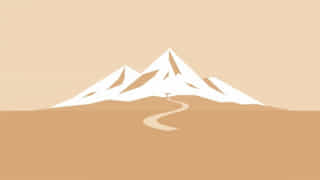Back to the Klondike evokes images of snow-covered mountains, rugged pioneers, and the mad rush for gold that changed lives forever. Located in the Yukon Territory of Canada, the Klondike region became world-famous during the late 1890s when the discovery of gold along the Klondike River triggered a mass migration of prospectors, dreamers, and fortune seekers. Today, the phrase Back to the Klondike reflects both a literal and symbolic journey a return to a place of history, challenge, and untamed nature. Whether you’re a history buff, a fan of adventure tales, or a traveler seeking an off-the-beaten-path experience, the Klondike still calls out to the curious and the bold.
The Klondike Gold Rush: A Historical Overview
The Klondike Gold Rush officially began in 1896 when gold was discovered near Bonanza Creek, a tributary of the Klondike River. The news spread quickly, and by 1897, tens of thousands of hopeful miners had set out for the Yukon in search of wealth. The journey was treacherous, often involving passage over the Chilkoot or White Pass trails followed by river travel into Dawson City, the epicenter of the goldfields.
Key Historical Facts
- The gold discovery occurred in August 1896.
- By mid-1898, Dawson City had grown to over 30,000 people.
- Fewer than half the stampeders actually reached the Klondike region.
- Most did not strike it rich, but a few fortunes were made.
This period left a lasting impact on Canada’s development and inspired books, films, and songs. The adventurous spirit of the Klondike Gold Rush continues to influence cultural imagination even today.
Modern-Day Klondike: Dawson City and Beyond
If you’re going back to the Klondike today, Dawson City is your ideal starting point. Once a bustling boomtown, Dawson has transformed into a historical and cultural site that preserves its rich heritage while offering modern amenities for travelers.
Things to Do in Dawson City
- Explore restored buildings from the gold rush era
- Visit the Dawson City Museum for interactive exhibits
- Walk the wooden boardwalks of Front Street
- Tour the old goldfields and dredging equipment
Visitors can also take part in theatrical performances, festivals, and historical reenactments that bring the Klondike’s past to life.
The Journey to the Klondike Today
While modern transportation has made reaching the Klondike far easier than in the 19th century, the adventure remains part of the experience. Travelers often fly into Whitehorse, the capital of Yukon, and drive or bus to Dawson City. The journey follows the same general route many gold seekers once traveled, now paved and equipped with accommodations along the way.
Travel Options
- Flights from major Canadian cities to Whitehorse
- Scenic drives along the Klondike Highway
- Guided tours for historical context and convenience
Along the route, travelers will pass rivers, forests, and mountains that remain largely untouched, giving a sense of the landscape early prospectors faced.
Outdoor Adventures in the Klondike Region
Beyond its history, the Klondike region offers a range of outdoor activities. The wilderness of the Yukon is ideal for those seeking to reconnect with nature and test their skills in the great outdoors.
Popular Activities
- Hiking and backpacking in Tombstone Territorial Park
- Canoeing or kayaking the Yukon River
- Dog sledding tours in the winter months
- Wildlife viewing including bears, moose, and eagles
Whether you’re traveling in the summer or winter, the Klondike has something to offer for every type of explorer.
Cultural and Indigenous Heritage
The Klondike is also home to rich Indigenous traditions and cultures, especially of the Tr’ondëk Hwëch’in First Nation, whose ancestors lived in the region long before the gold rush. Today, their stories, customs, and community efforts contribute significantly to the area’s cultural landscape.
Ways to Experience Local Culture
- Attend cultural events and storytelling sessions
- Visit the Dänojà Zho Cultural Centre
- Learn about sustainable tourism efforts in the area
These experiences provide deeper insight into the lives of the people who continue to inhabit and care for the land surrounding the Klondike River.
Klondike in Popular Culture
Back to the Klondike is also the title of a well-known story featuring Scrooge McDuck, created by Carl Barks in the 1950s. In the tale, Scrooge revisits his past in the goldfields, confronting old memories and rekindling lost romance. This story reflects how the Klondike has been romanticized and remembered through generations.
Other Cultural References
- Jack London’s novels like Call of the Wild and White Fang
- Poems by Robert W. Service, including The Cremation of Sam McGee
- Documentaries and historical dramas on gold rush history
The enduring appeal of the Klondike in books, animation, and film speaks to its place in both Canadian and global storytelling traditions.
Tips for Visiting the Klondike Region
If you’re planning your own trip back to the Klondike, here are a few tips to make your adventure more enjoyable and meaningful:
What to Pack
- Layered clothing for rapidly changing weather
- Sturdy hiking boots
- Camera or smartphone for capturing scenic views
- Books or audiobooks on the Klondike Gold Rush for background
When to Visit
- Summer (June to August) offers long daylight hours and open attractions
- Fall (September) provides colorful foliage and fewer crowds
- Winter (December to March) is best for snow-based activities
Make sure to check local travel advisories and plan accommodations in advance, as some services are seasonal or limited in remote areas.
Going back to the Klondike isn’t just about retracing history it’s about reconnecting with a spirit of adventure that still lives in the Yukon’s rivers, trails, and towns. Whether you’re visiting Dawson City, paddling along the Yukon River, or diving into stories from the past, the Klondike offers an unforgettable journey. It’s a place where legends were made, and where modern travelers can still find inspiration, challenge, and wonder. The call of the Klondike is timeless, and answering it means stepping into a world where the past and present merge in the heart of the wild North.
